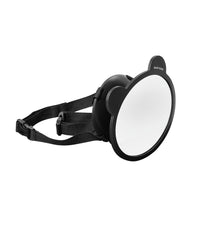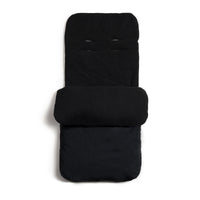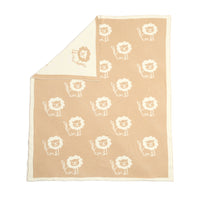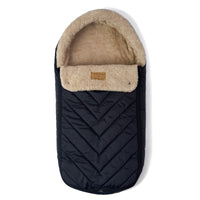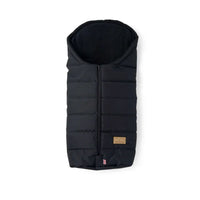
What is a Baby Car Seat and Why is it Crucial for Child Safety?
When it comes to the safety of our little ones, no precaution is too small. As parents or guardians, one of the most vital choices we make is ensuring the safety of our children during car journeys. This is where baby car seats play a crucial role. In this comprehensive article, we will delve into the depths of what a baby car seat is, its importance, the different types available, and the key factors to consider when choosing one.
What is a Baby Car Seat?
A baby car seat, also known as an infant car seat or child restraint system, is a specialized seat designed to provide optimum protection and safety for infants and young children during car journeys. These seats are specifically engineered to reduce the risk of injury in the event of a collision or sudden braking. A baby car seat consists of a sturdy shell, a harness system, and cushioning to absorb impact forces.
Why is a Baby Car Seat Important?
The importance of a baby car seat cannot be overstated. Motor vehicle accidents are a leading cause of injuries and fatalities among children. A properly installed and appropriately used baby car seat significantly reduces the risk of severe injuries or even death. It provides a cocoon-like environment, limiting movement and distributing crash forces across the strongest parts of the child's body, such as the back and shoulders while keeping the head and neck properly aligned.
Different Types of Baby Car Seats
Rear-Facing Infant Car Seats
Rear-facing infant car seats are specially designed seats that are used to transport newborns and infants in vehicles. They are designed to face the rear of the vehicle, which means the baby will be positioned in a reclined position and facing the back seat of the car. These car seats provide crucial head and neck support and offer a cozy and safe environment for the youngest passengers.
The primary purpose of rear-facing infant car seats is to protect the baby's head, neck, and spine, which are still developing and are more vulnerable to injury compared to older children and adults. Placing the seat in a rear-facing position allows the seat to absorb the impact of a collision and distribute the forces over the entire body, reducing the risk of severe injuries.
Rear-facing infant car seats typically come with a five-point harness system, which includes straps that secure the child at the shoulders, hips, and between the legs. The harness ensures that the baby is securely restrained in the event of an accident, preventing it from being ejected or thrown forward. The harness can be adjusted as the baby grows to provide a snug and comfortable fit.
Convertible Car Seats
A convertible car seat is a type of car seat designed to accommodate infants and toddlers. It is called a "convertible" because it can be adjusted and converted from a rear-facing position for infants to a forward-facing position for older children.
The primary function of a convertible car seat is to provide safety and protection for children during car travel. When used in the rear-facing position, the seat is intended for infants and younger children who are too small to face forward. Rear-facing positions are considered safer for babies because they provide better support to the head, neck, and spine in the event of a sudden stop or collision.
As the child grows and meets the specific height and weight requirements specified by the car seat manufacturer, the convertible car seat can be converted to a forward-facing position. This position allows the child to face forward, providing them with a better view of their surroundings and allowing them to interact with others in the vehicle.
Convertible car seats typically have adjustable features, including the harness straps and the seat recline angle, to ensure a proper fit and comfort for the child at each stage of their development. They also come with built-in safety features such as side-impact protection, energy-absorbing foam, and secure attachment systems to provide enhanced protection in case of an accident.
Booster Car Seats
A booster car seat is a type of child safety seat designed to be used by older children who have outgrown traditional forward-facing car seats but are not yet ready to use the adult seat belt alone. Booster seats provide a higher seating position for the child, allowing the seat belt to fit properly and safely.
The primary purpose of a booster car seat is to elevate the child so that the seat belt rests correctly across their body. This helps ensure that the lap belt lies snugly across the child's upper thighs, rather than on their stomach, and that the shoulder belt fits across their shoulder and chest rather than cutting into their neck or slipping off.
Booster seats come in different designs, but most commonly, there are two types: high-back boosters and backless boosters. High-back boosters have a backrest that provides support for the child's back and head. They are suitable for vehicles with low seatbacks or for children who appreciate the added support. Backless boosters, on the other hand, are simply a cushioned base that lifts the child up, allowing them to use the vehicle's seat belt correctly.
All-in-One Car Seats
An All-in-One car seat, also known as a 3-in-1 or multi-mode car seat, is a versatile and adaptable child safety seat designed to accommodate different stages of a child's growth. These seats are designed to be used from infancy to early childhood, typically accommodating children from birth to around 10 years old or when they reach the maximum weight or height limit specified by the manufacturer.
The key feature of an All-in-One car seat is its ability to transform and adjust to different seating configurations to meet the changing needs of a growing child. It combines three main configurations:
- Rear-facing: Initially, the seat is installed in a rear-facing position, which is the safest way for infants and young children to travel in a vehicle. Rear-facing provides optimal protection for a child's head, neck, and spine in the event of a crash. The weight and height limits for rear-facing mode vary depending on the specific car seat model.
- Forward-facing: As the child grows and meets the height and weight requirements for forward-facing travel, the seat can be converted to a forward-facing position. In this mode, the child faces the front of the vehicle and is secured by the car's harness system. The forward-facing configuration typically accommodates toddlers and older children.
- Booster seat: Once the child outgrows the forward-facing mode, the All-in-One car seat can be converted into a high-back or backless booster seat. The booster seat positions the child higher, allowing the vehicle's seat belt to fit properly across their body. Booster seats are used until the child reaches the appropriate age, height, and weight to transition to a regular vehicle seat belt without the need for additional support.
All-in-one car seats often come with adjustable features, such as adjustable headrests, harness heights, and recline positions, to provide a comfortable and secure fit for children of various sizes. They are typically equipped with energy-absorbing foam, side-impact protection, and a robust harness system to enhance safety during a collision.

Key Factors to Consider When Choosing a Baby Car Seat
Safety Standards and Certifications
In the United Kingdom, car seat safety standards and certifications ensure that car seats meet specific requirements and provide a certain level of safety for children. These standards and certifications are designed to protect children in the event of a car accident and minimize the risk of injury.
The primary standard for car seat safety in the UK is the United Nations Regulation No. 44 (UN R44), which has been in effect for many years. However, it is important to note that there is a transition underway from UN R44 to the new i-Size regulation, UN R129. Let's take a closer look at both standards:
- UN R44: This regulation covers traditional weight-based car seats and booster seats. It categorizes car seats into different groups based on the weight of the child. The groups are as follows:
- Group 0: Rear-facing infant carriers (up to 10 kg or around 9-12 months)
- Group 0+: Rear-facing infant carriers (up to 13 kg or around 12-15 months)
- Group I: Forward-facing seats (9-18 kg or around 9 months to 4 years)
- Group II: Booster seats (15-25 kg or around 4 to 7 years)
- Group III: Booster seats (22-36 kg or around 6 to 12 years)
- UN R129 (i-Size): This new regulation focuses on height-based car seats instead of weight-based categories. It promotes the use of rear-facing seats for longer periods, as they provide better protection for young children. i-Size car seats have additional safety features, such as better side-impact protection and improved compatibility with car anchorage systems (ISOFIX).UN R129 introduces a height classification system, including a minimum height requirement for rear-facing seats. The regulation also emphasizes the use of ISOFIX attachment points, which provide a standardized and secure installation method. i-Size car seats undergo similar testing procedures to UN R44, including frontal and side-impact crash tests.
To ensure compliance with these safety standards, car seats must undergo testing by approved testing facilities. Once a car seat passes the required tests, it receives certification and can be sold in the European market. Various certification bodies exist across Great Britain, including national and independent organizations that assess car seats' compliance with the applicable standards.
Age, Weight, and Height Limitations
In the UK, car seat age, weight, and height limitations are important guidelines that help ensure the safety of children when traveling in a vehicle. These limitations are set based on the child's age, weight, and height to ensure that they are properly restrained in an appropriate car seat for their size and developmental stage. Here's an overview of the typical age, weight, and height limitations for car seats in the UK:
- Rear-Facing Infant Car Seats:
- Age: From birth to approximately 15 months.
- Weight: Up to 13 kg (Group 0+).
- Height: Up to 75 cm.
- Forward-Facing Car Seats:
- Age: From approximately 9 months to 4 years.
- Weight: 9 kg to 18 kg (Group 1).
- Height: Up to 105 cm.
- High-Back Booster Seats:
- Age: From approximately 4 years to 12 years.
- Weight: 15 kg to 36 kg (Group 2-3).
- Height: Up to 135 cm.
- Booster Car Seat:
- Age: From approximately 4 years to 12 years.
- Weight: 15 kg to 36 kg (Group 2-3).
- Height: Over 135 cm.
It's important to note that these age, weight, and height limitations are general guidelines, and different car seat models may have their own specific requirements. Always refer to the manufacturer's instructions and any guidelines provided by the government or relevant authorities for the specific car seat you are using.
Additionally, it's highly recommended to keep children in rear-facing car seats for as long as possible, ideally up to the age of 4, as it offers better protection for their head, neck, and spine in the event of a collision.
Ease of Installation and Use
Car seats must be installed correctly to provide optimal safety. Ease of installation refers to how straightforward it is to install a car seat securely in a vehicle, using either the vehicle's seat belts or the ISOFIX system (a standard anchorage system for car seats). Car seat manufacturers design their products to be as intuitive as possible, providing clear instructions and features that simplify the installation process.
In the UK, many car seats are now compatible with the ISOFIX system, which involves attaching the car seat to the designated anchorage points in the vehicle. This system aims to simplify and standardize the installation process, reducing the risk of incorrect installation.
Besides proper installation, car seats need to be easy to use on a day-to-day basis. Ease of use encompasses various factors, including adjusting the harness, reclining positions, and attaching and detaching the car seat from the base or stroller (if applicable).
To promote ease of use, car seats often feature adjustable components, such as harnesses and headrests, which can be easily modified to accommodate a child's growth. They may also include quick-release mechanisms and clear labeling to facilitate correct usage.
Comfort and Support
Baby car seat comfort and support are essential factors to consider when choosing a car seat for your child. The primary goal of a baby car seat is to provide a safe and secure environment for your baby during car rides. However, comfort and support also play a significant role in ensuring your baby's well-being and minimizing any discomfort or potential health risks.
Here are some aspects related to comfort and support in baby car seats:
- Padding and Cushioning: High-quality car seats feature ample padding and cushioning to provide a comfortable seating surface for your baby. The padding helps distribute the pressure evenly and reduces any discomfort caused by the seat's structure. It also serves as a shock absorber, minimizing the impact of bumps and vibrations during the ride.
- Adjustable Recline Positions: Many car seats allow you to adjust the seat's recline position, which is particularly important for infants and younger babies. A more reclined position ensures proper support for their developing neck and spine, and it also helps prevent their heads from flopping forward, reducing the risk of breathing difficulties.
- Head and Neck Support: Newborns and infants have weak neck muscles, so a baby car seat should have adequate head and neck support. Look for seats with adjustable or removable headrests or inserts that provide proper alignment and support for your baby's head, minimizing the risk of neck strain or injury.
- Harness System: The harness system of a baby car seat plays a crucial role in both safety and comfort. It should have well-padded shoulder straps and a secure five-point harness design. The padding on the straps helps prevent rubbing and chafing on your baby's delicate skin, while the five-point harness keeps them securely in place without causing discomfort.
- Breathability: Baby car seats that incorporate breathable materials allow air circulation, reducing sweating and maintaining a comfortable temperature for your baby. This is particularly important during hot weather or longer car rides to prevent overheating and discomfort.
- Size and Ergonomics: Baby car seats come in various sizes, and it's important to choose one that fits your baby properly. The seat should provide adequate space for your baby to move comfortably without feeling too confined. Ergonomic designs also ensure proper posture and alignment, reducing the risk of any discomfort or strain.
Durability and Longevity
Baby car seat durability and longevity refer to the ability of a car seat to withstand regular use, wear and tear, and maintain its structural integrity over an extended period of time. Here are some factors that contribute to the durability and longevity of baby car seats:
- Construction and Materials: High-quality car seats are built with durable materials such as reinforced steel frames, impact-absorbing foam, and sturdy plastics. These materials are designed to withstand the forces experienced during a collision and provide protection to the child.
- Safety Standards: Car seats undergo rigorous testing to meet safety standards set by regulatory bodies. These standards ensure that the car seat can withstand various impacts and remain effective in protecting the child.
- Crash Testing: Reputable car seat manufacturers conduct extensive crash tests to evaluate the performance of their products in different scenarios. These tests simulate real-life accidents and help ensure that the car seat remains structurally intact and provides adequate protection to the child.
- Maintenance and Cleaning: Regular maintenance and cleaning play a role in prolonging the lifespan of a car seat. Follow the manufacturer's instructions for cleaning and care, which typically involve wiping down the seat with mild soap and water. Avoid using harsh chemicals or abrasive cleaners that may damage the seat's materials.
- Expiration Date: Baby car seats typically have an expiration date, usually indicated by a sticker or label on the seat. This is because materials can degrade over time, reducing the seat's effectiveness in a crash. It's important to adhere to the expiration date and replace the seat when it expires, even if it appears to be in good condition.
- Proper Use and Installation: Correct installation and usage of the car seat are crucial for ensuring its durability and longevity. Follow the manufacturer's instructions and consult resources such as the car seat manual or seek professional assistance to ensure the seat is installed properly. Additionally, use the car seat in accordance with the recommended weight and height limits specified by the manufacturer.
- Avoid Secondhand Seats and Unknown Histories: When possible, it's generally recommended to avoid using secondhand car seats, especially if their history is unknown. Car seats may have been involved in accidents or have undergone excessive wear and tear, which can compromise their safety and durability. If you do opt for a secondhand seat, ensure that it meets all safety standards, has not expired, and has not been damaged.
Additional Features and Accessories
Baby car seats come with various additional features and accessories to enhance safety, comfort, and convenience for both the baby and the parents. These features and accessories can vary depending on the specific model and brand, but here are some common ones:
- Adjustable recline: Many car seats offer multiple recline positions, allowing you to adjust the seat angle to provide optimal comfort and support for your baby, especially when they are sleeping.
- Harness systems: Most car seats in the UK use a five-point harness system, which consists of two shoulder straps, two waist straps, and a crotch strap. The harness keeps the baby securely restrained in the seat and minimizes the risk of ejection or injury during a collision.
- Side-impact protection: Some car seats are designed with enhanced side-impact protection, featuring energy-absorbing materials and deep side wings. These features provide additional protection to the baby's head, neck, and torso in the event of a side collision.
- ISOFIX compatibility: ISOFIX is a standardized system for installing car seats directly into the vehicle's chassis using connectors. Many baby car seats in the UK are ISOFIX compatible, which makes installation easier and reduces the risk of incorrect installation.
- Removable and washable covers: Babies can be messy, so having a car seat with removable and washable covers is convenient for keeping the seat clean and hygienic. Look for seats with easy-to-remove covers that are machine washable.
- Adjustable headrest and harness height: As your baby grows, their car seat should be able to accommodate their increasing height. Car seats with adjustable headrests and harness heights allow you to customize the fit as your baby develops.
- Sun canopy: Some car seats feature a built-in sun canopy or a detachable sunshade to provide shade and protect your baby from direct sunlight while in the car.
- Travel system compatibility: Many baby car seats are designed to be compatible with travel systems. This means they can be easily attached and detached from a stroller or a pram, allowing you to transfer your baby from the car to the stroller without disturbing their sleep.
- Newborn inserts and padding: For newborns and smaller babies, some car seats come with additional inserts and padding to provide better support and ensure a snug fit. These inserts can be removed as the baby grows.
- Storage pockets: Some car seats have built-in storage pockets on the sides or back, providing a convenient place to store small items like toys, pacifiers, or wipes.

Installation and Proper Use Guidelines for Baby Car Seats
Proper installation and use of a baby car seat are vital to ensure its effectiveness. Follow the manufacturer's instructions meticulously, whether installing it with the vehicle's seat belt or using the ISOFIX system. Regularly check for proper harness adjustment, secure installation, and any signs of wear or damage.
Conclusion
A baby car seat is a non-negotiable safety measure for young passengers during car journeys. It provides essential protection and peace of mind to parents and caregivers alike. By understanding the different types available, considering key factors, and following proper installation and usage guidelines, you can ensure your child's safety on the road. Invest in a quality baby car seat that suits your child's needs, and make safe transportation a top priority for their well-being.
Remember, their safety is in your hands!





